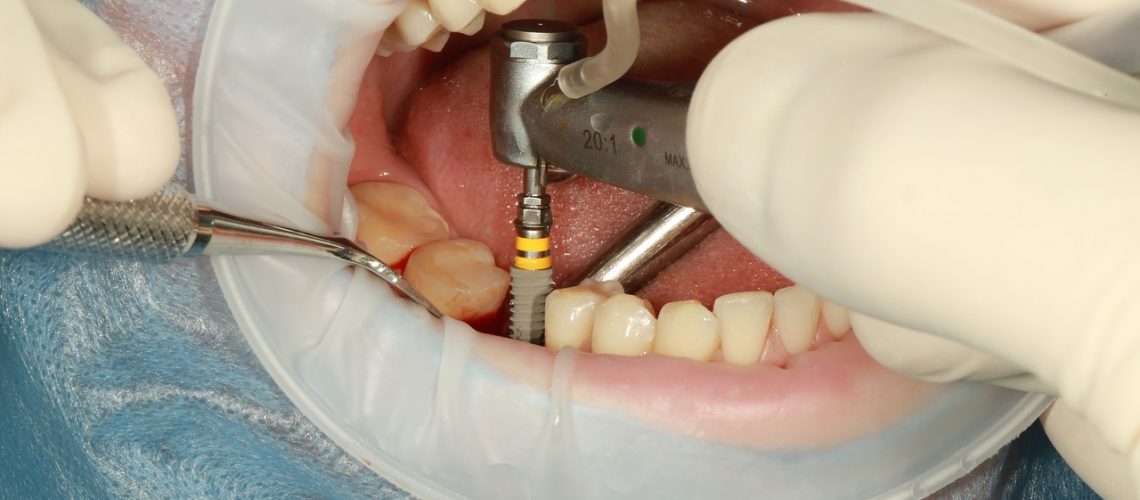The Buzz on Dental Sense
The Buzz on Dental Sense
Blog Article
Little Known Facts About Dental Sense.
Table of ContentsExamine This Report on Dental SenseWhat Does Dental Sense Do?Everything about Dental SenseExamine This Report about Dental Sense
are clinical tools operatively implanted into the jaw to restore a person's capacity to eat or their appearance. They provide assistance for synthetic (phony) teeth, such as crowns, bridges, or dentures. When a tooth is shed due to injury or illness, an individual can experience issues such as rapid bone loss, faulty speech, or modifications to eating patterns that lead to pain.Oral dental implant systems contain a dental implant body and oral implant abutment and might also consist of a joint fixation screw. Cosmetic dentistry services. The oral implant body is operatively inserted in the jawbone instead of the tooth's origin. The dental implant joint is normally connected to the implant body by the abutment addiction screw and prolongs through gums right into the mouth to sustain the attached fabricated teeth
(https://dentalsense1.bandcamp.com/album/dental-sense)Framework of The Oral Implant System selecting oral implants, speak to your dental provider about the possible benefits and risks, and whether you are a candidate for the procedure. Things to take into consideration: Your total wellness is an important consider identifying whether you are a great candidate for oral implants, for how long it will certainly take to heal, and how long the dental implant might remain in area.
Cigarette smoking may affect the recovery procedure and decrease the long-term success of the implant. The recovery procedure for the dental implant body might take several months or longer, during which time you commonly have a temporary joint in place of the tooth. the dental implant procedure: Meticulously follow the dental health instructions provided to you by your oral service provider.
Excitement About Dental Sense
Implant failing can lead to the requirement for one more surgical treatment to repair or replace the dental implant system. Brings back the capacity to eat Brings back cosmetic appearance Helps maintain the jawbone from diminishing because of bone loss Preserves the health of the bordering bone and periodontals Aids maintain nearby (close-by) teeth stable Boosts top quality of life Damages to surrounding natural teeth throughout implant positioning Injury to the surrounding tissues throughout surgery, such as sinus opening Injury during surgical procedure (as an example, crack of surrounding jawbone) Insufficient feature, such as seeming like the teeth do not attack together generally A sensation that the tooth hangs or twisting in position arising from an abutment screw loosening Implant body failing (looseness of the implant body) as a result of systemic infection, which might be most likely in individuals with uncontrolled diabetes mellitus due to local infection in bone and gum tissues sustaining the dental implant body due to postponed healing, which might be most likely in people who smoke Trouble cleaning up the gum tissues around the implant, causing poor oral health Untreated periodontal illness Post-surgical numbness because of nerve impingement or damage Constantly notify healthcare service providers and imaging technicians that you have oral implants prior to any kind of magnetic resonance imaging (MRI) or x-ray procedures.
FDA is not knowledgeable about any kind of unfavorable events reported for MRI or x-ray treatments with dental implants. Dental implants systems are normally made from products that adhere to international consensus criteria of the International Company for Standardization (ISO) or ASTM International. These requirements have information of what makes Extra resources a secure material.

An oral implant is a structure that changes a missing tooth. With screw-like devices, the cosmetic surgeon inserts a dental implant right into the jawbone, and it works as a support for an artificial tooth, called a crown. A device called a joint links the synthetic tooth to the oral implant. The crown is customized to fit the person's mouth and match the shade of their teeth.
Fascination About Dental Sense
Some people are not eligible for oral implant surgical procedure. It is for dental surgeons to operate individuals with: acute illnessuncontrollable metabolic diseasebone or soft cells illness or infectionIf these problems are fixed, an individual can have the surgical treatment. In, oral cosmetic surgeons avoid operating on people with: If people with any one of the above undergo oral implant surgical procedure, there is a greater danger of the dental implant falling short.

Oral implant surgical treatment is an individualized procedure. It's not the exact same for everyone. But the adhering to offers a basic introduction of what you can expect your dental professional, oral cosmetic surgeon, periodontist or prosthodontist to do: Position the implant surgically. Provide you time to heal. Connect the post and last crown, bridge or denture.
Next off, your surgeon will carefully put the dental implant into your jaw. If your dental implant is near the front of your mouth, your dental practitioner will make a short-lived tooth for you to put on until you recover.
Some Known Facts About Dental Sense.
Your company can tell you what to anticipate in your scenario. Throughout the healing phase, your jawbone ought to fuse to the dental implant. This process, called osseointegration, is vital for stability and lasting success. This procedure can take anywhere from 3 to nine months. In some cases, it may take much longer.
When your implant heals, your dental practitioner can affix the joint (little port message) and your last reconstruction (crown, bridge or denture). This typically takes about one hour to finish and may call for a second minor surgical procedure. You shouldn't feel any pain throughout your dental implant treatment because your supplier will certainly make use of drug to numb your periodontals.
Report this page